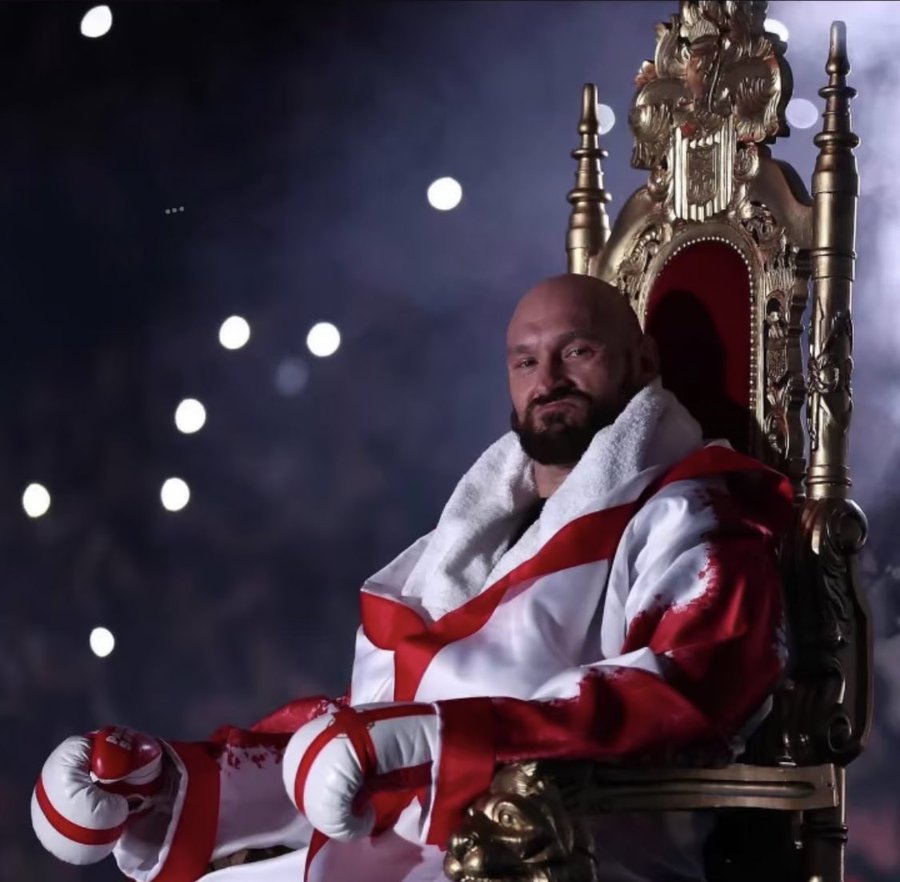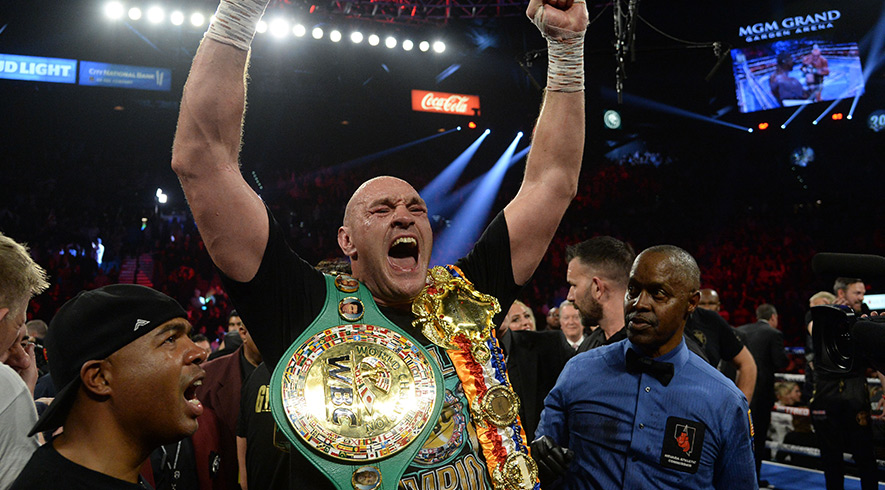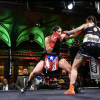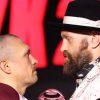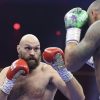By Carlos Acevedo
Pat Valentino, heavyweight contender of the 1940s, was famous both for his savagery in the ring and, incongruously, for his chic hairstyle, which he often jokingly compared to that of Samson. He won the California State Heavyweight title in 1948 and was one of the most popular attractions in California for nearly a decade. He died of pneumonia on July 25th in Las Vegas.
Valentino, whose real name was Pasquale Guglielmi, was born on January 25, 1920, in the Excelsior District of San Francisco. One of eight children, Valentino was raised dirt poor during the Depression by an abusive father who once made this bleak, near Dickensian proposal to his son: “You work, I feed you.” Gaetano Guglielmi was so miserly that Valentino was often forced to walk barefoot to school without a bagged lunch or a pencil. “I was the fifth oldest,” Valentino said about his father, “and he just hated me.”
Emotionally scarred at an early age, Valentino developed a crippling lack of self-confidence and an almost pathological shyness. He dropped out of school at 13 to work brutal hours at the family grocery store on Mission Street. He also moonlighted as a newsboy at the time, handing his pitiful salary over to his callous father without hesitation. This kind of dismal background, the sort Zola might have cribbed from for material, often ends in despair, and many times Valentino was close to giving in to pessimism. “I had nothing going for me,” he told The San Francisco Examiner in 2004. “I would have been digging holes—if I were lucky.” Somehow, Valentino decided that insignificance did not necessarily have to be his pre-ordained fate. “I started fighting to get rid of my fear,” he once said.
Inspired by the ring heroics of another Excelsior product, Ray Actis, a young Valentino tested out several local gyms, often with spectacularly embarrassing results. Powerpunching Actis, like Valentino the son of Italian immigrants, rode his hurtful left hook to local fame during the early 1930s, brawling up and down the Bay Area with the likes of Carmen Barth, Gus Lesnevich, Jack Gibbons, and Billy Conn. Through his rousing feats inside the ring, Actis took on larger-than-life proportions along Persia Street and Naples Avenue. His local glory gave the awkward and uneducated Valentino what he thought of as a possible “out” from shame and anonymity.
Valentino hooked up with former lightweight Tommy Cello as his trainer and turned pro in 1939. He adopted his nom de boxe from a distant relative: 1920s Hollywood sex symbol Rudolph Valentino. Within months his rugged style and good looks shot him up to headline status. After little more than half a dozen fights, Valentino was booked for 10-round semis and main events at National Hall and the newly opened Coliseum Bowl on Market Street. Although Valentino scored some notable wins early in his career–against former middleweight titlist Solly Krieger, for example, and slick Ralph DeJohn–he also lost decisions to unremarkable fighters Harold Blackshear and Tommy Martin.
In August 1941 Valentino was outclassed by tricky ex-light heavyweight champion Melio Bettina over the distance, and was stopped by Turkey Thompson after nine brutal rounds. A few weeks after losing to Thompson, Valentino joined the Coast Guard (where he accidentally shot himself through the left hand, damaging a finger so severely he could no longer make a proper fist) and fought sporadically until 1944. While on furlough, Valentino, a natural light heavyweight whose boundless ambition led him to fight bigger men, avenged his loss to Thompson by decision before a crowd of nearly 9,000 at the Civic Auditorium. In his next bout he lost via points to “Duration” heavyweight champion Jimmy Bivins.
Military service kept Valentino out of the ring for the next two years. When he returned to boxing in April 1946, he won thirteen out of his next fourteen bouts before being stopped by Fitzie Fitzpatrick in five rounds. Still, his ferocious bodywork and swarthy looks made Valentino a popular attraction in San Francisco fight clubs. His raucous–and fateful–grudge trilogy with local bruiser Tony Bosnich drew feverish crowds. Their first fight, in December 1947, was declared a technical draw after Valentino suffered a cut from a butt in the first round; Bosnich won the second bout by majority decision over 10 rounds after flooring Valentino late in the fight; and Valentino convincingly won the rubber match over 15 hectic rounds on October 4, 1948. It was in the last fight that Valentino took a thumb in the eye and suffered a torn retina. Despite the injury, gutsy Valentino entered the ring two months later to face Turkey Thompson once again for the California State Heavyweight title. Valentino won a grueling decision, and soon found himself ranked among the top ten heavyweights in the world. Unfortunately, Valentino could not cash in on his ranking with big money fights; an operation to repair his torn retina left him on the sidelines for most of 1949.
Valentino was recuperating from eye surgery when his manager, Jack Andrade, relayed an offer to face Ezzard Charles for the NBA heavyweight title. With his eye still healing and with a layoff of nearly a year to consider, Valentino bravely–or foolishly–gave the unscrupulous Andrade the go-ahead. He was given only four weeks to train. For Valentino, the fight was more than a chance to win the title; it was a way to fulfill his hopes of distinction. For this aspiration he would lose all sight in his right eye. “In a way, it was worth it,” he told The Oakland Tribune in 2004. “I needed the money and it was a title fight. When I was young, I told some kids I was going to fight for the heavyweight championship. They laughed at me.”
On October 14, 1949, a sellout crowd of over 19,000 jammed the Cow Palace to see the first heavyweight championship fight held in California since Jack Johnson flattened Stanley Ketchel in 1909. Promoters drew a gate of $167,870 despite the fact that Valentino was considered little more than a set-up for the heavyweight champion. A 5 to 1 underdog, Valentino, who earned a career high $5,000 for the fight, would make sure that Charles would earn every cent of his hefty $40,000 purse.
From the opening bell Valentino forced a chaotic pace, thumping Charles around the ring with lefts and rights to the body. Twice he doubled up the champion near the ropes with resounding bodyshots. “I read in the newspaper a year later that I had broken one of his ribs,” Valentino recalled. “I broke a lot of ribs. I hate to hurt anybody, but that was the way I fought.” Driven by desires beyond money or titles, Valentino tore into Charles with the fury of a tempest. With the overflow crowd in pandemonium, the two heavyweights swapped blows frantically, with Valentino getting the best of the exchanges in the early rounds. Charles countered coolly, snapped his whiplash jab with precision, and used his finesse to turn the fight around in the fifth and sixth rounds. Although Valentino continued to press his assault, he began to decelerate, and his reckless charges were being picked off by pinpoint counters from the sharpshooting champion. In the eighth round Charles landed a cuffing left that placed Valentino into position for a short right hand that landed like a torpedo. Valentino, ahead on two of the three scorecards, collapsed and was counted out. He had to be helped back to his corner.
Years later Valentino described the end of the fight to Jack Fiske: “As the fight went on I felt the effects of not being in condition. In the eighth round, Charles hit me with a hook and a right cross, really nailed me flush, and I went down on my back. I struggled up, but the referee, Jack Downey, stopped it at 35 seconds. I thought I should have been permitted to continue; but I never protested. In fifteen years I never protested once.” His dream of becoming a “somebody” would prove to be costly: the punishment he took from Charles left him completely blind in his right eye.
A few weeks after the Charles fight, Valentino was approached to face Joe Louis in an exhibition bout. A $7,500 purse, by far the biggest of his career, beckoned Valentino the way ghost lights lure the unsuspecting on foggy nights. Like many fighters facing premature retirement, Valentino hoped for one last score to put him over the top, and facing Louis, even with only one eye, seemed like a good idea to a man who admitted to living “from fight to fight.” Besides, theoretically, at least, it would not be a “real” fight. Valentino accepted the bout. There remained only the conundrum of the pre-fight physical, and how, exactly, a half blind boxer would manage to circumvent it. Valentino passed the exam with a bit of grade school legerdemain any dutiful physician might have spotted: “During the eye test at the weigh-in,” he told Ring Magazine in 2002, “I brought my right hand over my right eye and read the chart with my good eye. Then I used my left hand to cover my right eye and no one noticed.”
In addition to his marked handicap (along with giving up over 30 pounds in weight), Valentino would have to contend with one of the greatest fighters in history. At age 35 and two years after relinquishing the heavyweight championship to shoot birdies and wrangle with the IRS, Louis was on a barnstorming exhibition tour that secretly doubled as sparring sessions for a looming comeback bout with Ezzard Charles. And Louis was never easy on his spar mates. Johnny Shkor, Joe Chesul, and Johnny Flynn were all dropped and generally flogged in exhibition matches in the weeks before Louis met Valentino. (Indeed, some of these exhibitions were so brutal that contender Lee Oma withdrew from one shortly after Louis fought Valentino. His argument was that Louis was not engaged in any mild demonstration of skills, but was engaging in actual fights. Oma instead sensibly demanded a legitimate match with “The Brown Bomber” and the sizeable purse that would accompany it.)
On December 8, 1949, Valentino and Louis met in Chicago Stadium before a crowd of 5,726. Unlike the harmless waltzes most exhibitions resembled, this was a fight. Jersey Jones speculated about the demolition job that took place: “The fact that Charles, a few weeks previously, had flattened Valentino in the eighth stanza in San Francisco may have been responsible for the devastating job Louis turned in on Pat of the flowing Tarzan tresses.” Louis, past his prime but still more than capable of handling second-tier contenders, went to work on Valentino. Nor was Louis, apparently, his only obstacle that night. For some reason Jack Andrade, who Valentino would soon be on the outs with, did not offer the most encouraging advice throughout the match. “In the corner Andrade said, ‘Take it easy.’ I asked why and he said ‘just do it.’ Louis was leveling–throwing hard punches–and in the third I said to myself, ‘To hell with this’ and got mad and belted him around.” Louis paid Valentino back with a clinical beating, finally dropping the rugged San Franciscan for the count in round eight. It was his last fight.
After retiring from the ring, Valentino moved to Los Angeles, where he obtained a few bit parts in films, including one alongside Ralph Meeker in “Glory Alley.” When the roles dried up, Valentino worked on an assembly line at Lockheed Aircraft before running a bar in North Hollywood for a few years. He returned to San Francisco in the early 1970s and became a popular fixture on Fisherman’s Wharf as maitre d’ for Scoma’s Restaurant. For over twenty years the affable ex-fighter greeted customers, delighting them with tales of his fight with Ezzard Charles. His legendary brawl with Charles gave Valentino a sort of second life, one filled with admiration and respect.
Pat Valentino, dead at 88, fought professionally from 1939 to 1949, and compiled a record of 45-11-4. Among the fighters he defeated were Turkey Thompson, Freddie Beshore, Solly Krieger, Ralph DeJohn, Buddy Knox, Tony Bosnich, and Freddie Fiducia. He also fought two draws with Joey Maxim. “…I took up boxing,” he once said, “because I wanted to be good at something.” At that, he succeeded.


